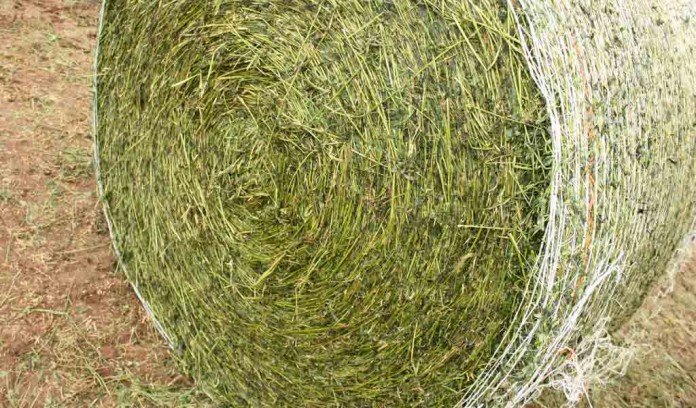Like it has for most other crops, it’s been a tough year for hay. Early in the season, excessive rains led to prevented planting and then delayed harvest, impacting both availability and quality of hay. Then later in the season drought conditions had a similar effect, delivering a double whammy to livestock producers.
So how do you ensure the hay that’s available comes at a fair price when considering its nutritional value to your animals? The single best way to evaluate hay quality is to have a sample of the hay tested for nutritional perimeters by a laboratory.
Without a hay test, you can evaluate leafiness, maturity, odor, color, softness, purity, bale condition and contaminants to determine overall quality.
Evaluating hay bales
Leafiness. Leaves are the most digestible portion of hay and contain more nutritional value for livestock than stems do. In higher quality hay, leaves will be plentiful and attached to stems.
Maturity. Maturity is the number one factor that determines hay quality. The more mature the hay, the higher the fiber content, which leads to decreased digestibility. Hay that is too mature will be stemy and full of ripe seed heads.
Odor. Sour, musty, dusty and damp smells indicate problems such as mold growth and spoilage. Animals will not eat hay that smells bad.
Color. Although color is not a reliable indicator of quality, green hay is usually a sign of good curing conditions. However, you could be wrong to assume green hay is better quality than brown hay.
Softness. Hay texture is important to ensure animal intake. Brittle hay will decrease intake, so watch for weeds that have thorns, spines or awns.
Purity. Pure stands of the same species or collection of species are easier to fit into a feed program and to describe for a sale.
Bale Condition. Bales should be around the same size and shape for easier storage. Any wrapped bales should be properly covered for protection against weather and to prevent spoilage.
Contaminants. Contaminants that reduce the quality and value of hay include poisonous weeds, mold, dirt and trash.











